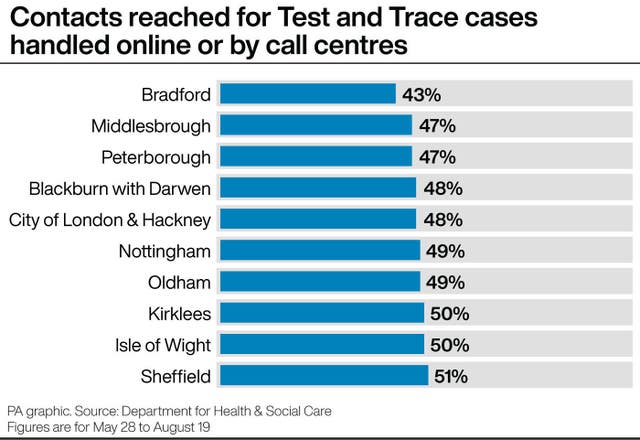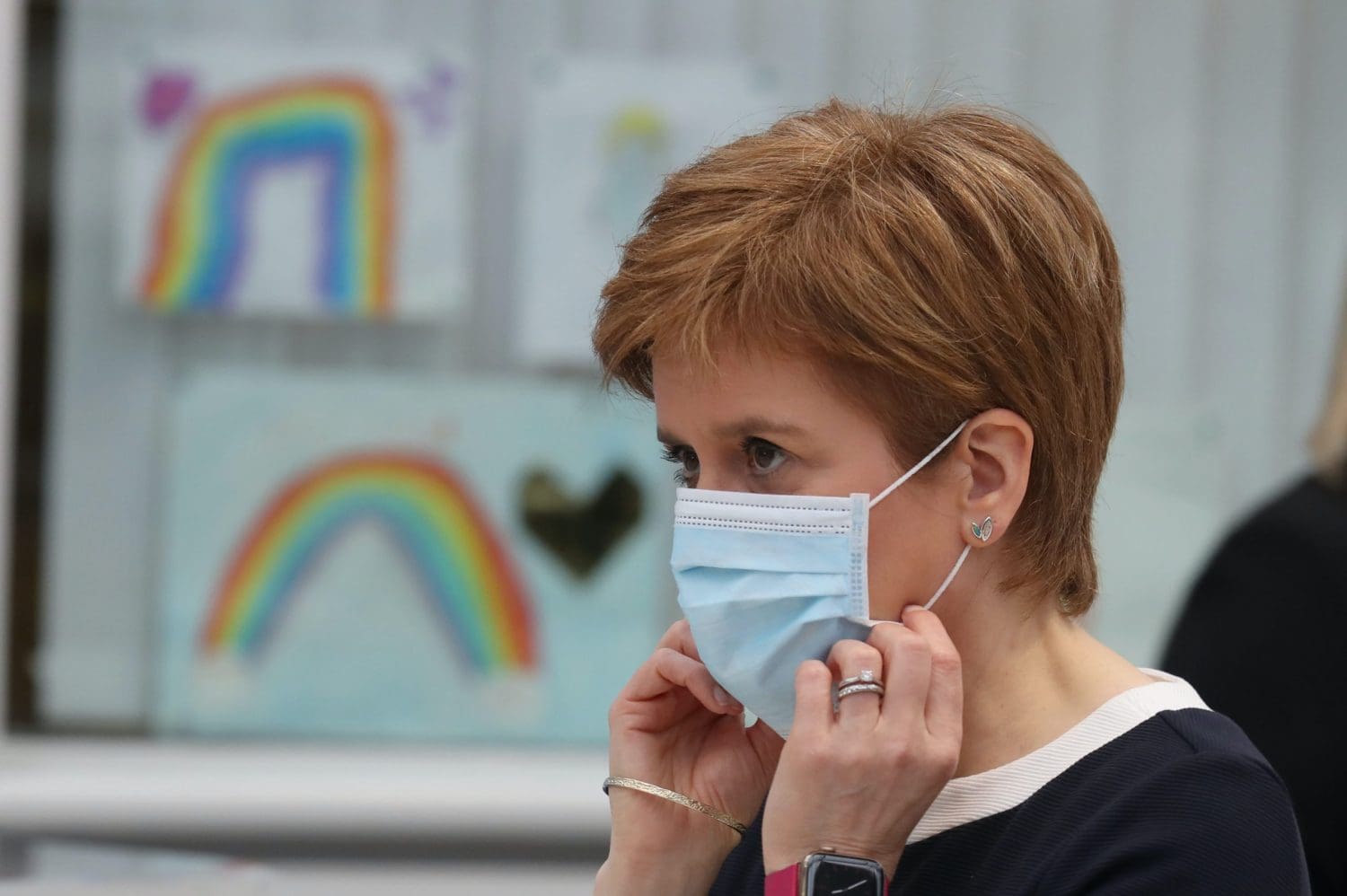Three-quarters of close contacts of people who tested positive for coronavirus (Covid-19) were reached through the NHS Test and Trace system, once again falling short of the government’s target, the latest figures show.
Some 75.5% of close contacts in England were reached in the week ending 19 August.
While this is up from 71.6% in the previous week, it is the ninth week in a row where the government’s Scientific Advisory Group for Emergencies (Sage) target of isolating 80% of contacts of coronavirus cases within 48-72 hours has been missed.
Ahead of this week’s figures being published, health secretary Matt Hancock acknowledged the system was “not quite there”.
He told LBC radio on 27 August: “One of the challenges is we want to get NHS Test and Trace up to over 80% of contacts, getting them to self-isolate – we’re at just over 75%, so we’re nearly there but not quite there.”
Meanwhile, the 24-hour turnaround target for so called “in-person” tests was also missed in the majority of cases, with the proportion of people getting their result in that time frame falling to just 40.7%.

That figure, covering regional site or mobile testing units for the week to 19 August, was down from 60.6% the previous week.
The figures, published by the Department of Health and Social Care, show that 65,398 people who tested positive for Covid-19 in England have had their cases transferred to the NHS Test and Trace contact tracing system since its launch.
Of this total, 50,876 people (77.8%) were reached and asked to provide details of recent contacts while 12,851 (19.7%) were not reached.
A further 1,671 people (2.6%) could not be reached because their communication details had not been provided, the figures covering the period 28 May to 19 August, showed.
Local health protection teams continued to perform better in reaching contacts and asking them to self-isolate than cases handled online or by call centres.
For cases handled by local teams, 95.6% of contacts were reached and asked to self-isolate in the week to 19 August.
By contrast, for those cases handled either online or by call centres, 61.6% of close contacts have been reached.
Looking at local breakdowns, just 43% of contacts have been reached for Test and Trace cases in Bradford handled online or by call centres.

This is the lowest proportion for any local authority area in England, figures for cases handled online or by call centres covering the 12 weeks of Test and Trace showed.
For cases in Middlesbrough and Peterborough 47% of contacts have been reached, for Blackburn with Darwen and the City of London & Hackney the figure is 48%, and for Nottingham and Oldham it is 49%.
Since the launch of Test and Trace, 246,262 close contacts of people who have tested positive for Covid-19 have now been reached through the system and asked to self-isolate.
This is 80.6% out of a total of 305,725 people identified as close contacts.
The remaining 59,463 people (19.4%) were identified as close contacts, but were not reached.
Deputy chief executive of NHS Providers Saffron Cordery described the figures as “worrying to see that too many people are still not being reached by the system”.
She added: “It’s also a real concern that overall turnaround times for swabs taken in the community are taking longer. This is a key component of an effective test and trace system which we’ll need for the months ahead. Clearly, we’re not there yet.”
Shadow health minister Justin Madders said: “It’s staggering that Matt Hancock has still not sorted this out.
“The government seems to have taken its eye off the ball in ensuring tests are readily available and quickly administered, with the latest figures showing it’s taking longer for people to get their results and the private sector companies still not reaching over half of the contacts of those who test positive.
“As children return to school next week, it is vital ministers show they have a grip on test and tracing.”
Meanwhile, researchers in Norwich said they had successfully completed a pilot project for weekly testing.
Launched at the end of July, the project was delivered by the Earlham Institute, the University of East Anglia (UEA), the Norfolk and Norwich University Hospitals, the John Innes Centre, the Quadram Institute and The Sainsbury Laboratory – all based on Norwich Research Park.
They said the study, which involved more than 3,000 tests from around 800 Norwich Research Park staff and students, could be used as a template for establishing local testing sites across the UK, taking advantage of under-utilised regional knowledge and infrastructure.
Professor Dylan Edwards, pro-vice-chancellor for the faculty of medicine and health sciences at UEA and one of the project coordinators, said: “During this pilot, regular testing has helped protect a small community and reassured them they’re not unknowingly spreading the virus.
“It’s now time to introduce a programme of mass population testing so we can see exactly where the virus is, how it’s spreading, and act rapidly to disrupt the chain of transmission.”

















